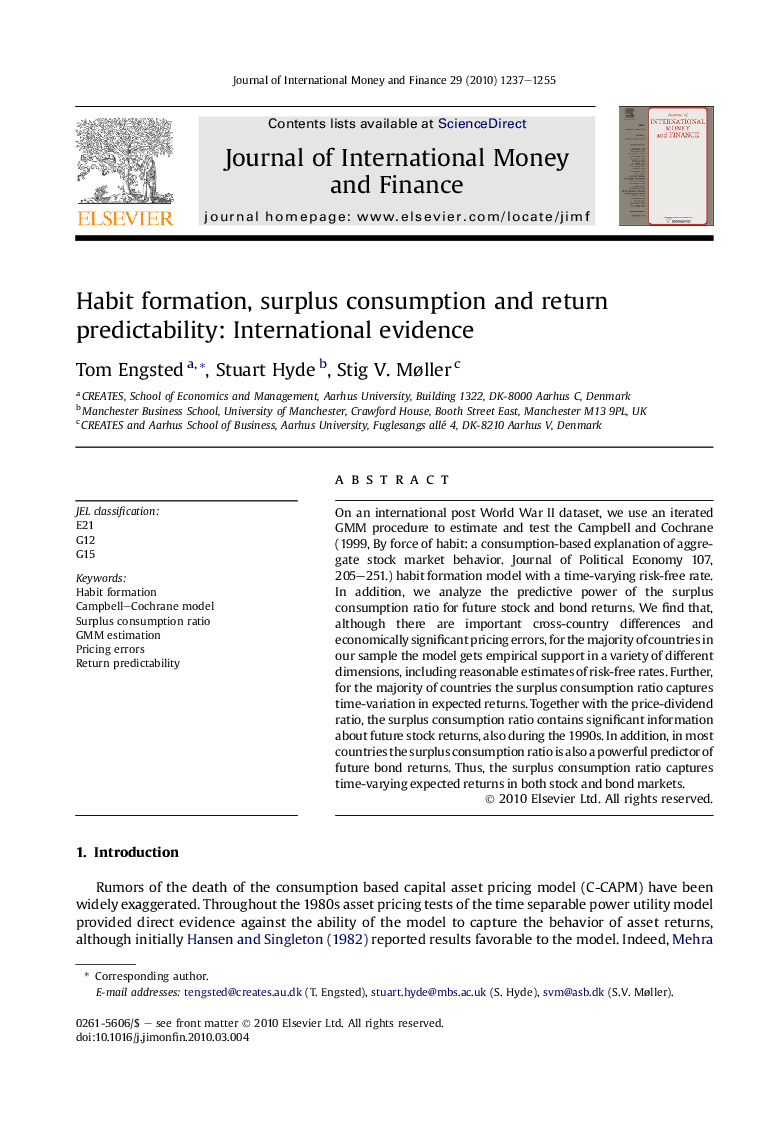| Article ID | Journal | Published Year | Pages | File Type |
|---|---|---|---|---|
| 963681 | Journal of International Money and Finance | 2010 | 19 Pages |
Abstract
On an international post World War II dataset, we use an iterated GMM procedure to estimate and test the Campbell and Cochrane (1999, By force of habit: a consumption-based explanation of aggregate stock market behavior. Journal of Political Economy 107, 205-251.) habit formation model with a time-varying risk-free rate. In addition, we analyze the predictive power of the surplus consumption ratio for future stock and bond returns. We find that, although there are important cross-country differences and economically significant pricing errors, for the majority of countries in our sample the model gets empirical support in a variety of different dimensions, including reasonable estimates of risk-free rates. Further, for the majority of countries the surplus consumption ratio captures time-variation in expected returns. Together with the price-dividend ratio, the surplus consumption ratio contains significant information about future stock returns, also during the 1990s. In addition, in most countries the surplus consumption ratio is also a powerful predictor of future bond returns. Thus, the surplus consumption ratio captures time-varying expected returns in both stock and bond markets.
Related Topics
Social Sciences and Humanities
Economics, Econometrics and Finance
Economics and Econometrics
Authors
Tom Engsted, Stuart Hyde, Stig V. Møller,
